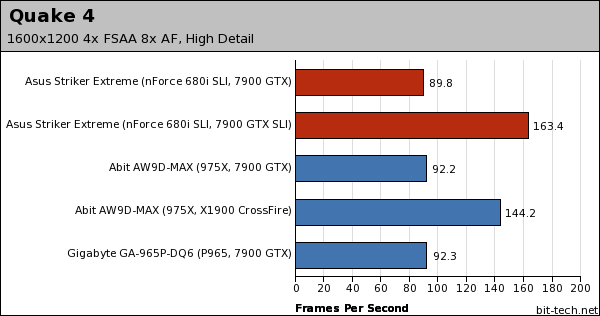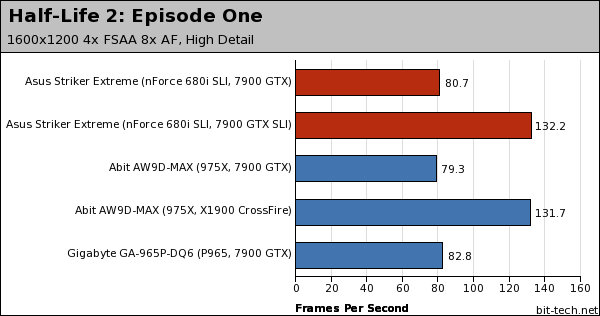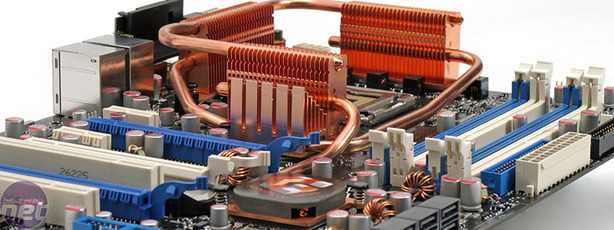Gaming Performance:



Overclocking:
We overclocked the board using the Core 2 Extreme X6800 CPU we've used for all of our testing - we will be revisiting this board in the future once it is available to buy, in order to find out what kind of overclockability we can obtain using one of the slower Core 2 Duo chips too.

First Thoughts...
The Asus Striker Extreme clearly has a lot of potential and it will be interesting to see how things develop over the next few weeks in the run up to retail availability. We can't wait to sit down and test a retail board with a final BIOS, because there is masses of potential for this board to be one of the best boards out there once it's released. That title is going to come at a price though, as Scan is listing the board on pre-order for just shy of an eye-watering £260 including VAT.If the board follows in the footsteps of the P5B Deluxe WiFi AP Edition, where the BIOS engineers unlocked more potential, we can't wait to see what the Striker can do. We found that there was an upper limit as to how far we could push the front side bus - that came rather suddenly, so we're assuming that this is a limitation with the current BIOS.
Along with that, there are some performance issues that need to be remedied before the board is available at retail. However, in saying that though, the board is no slouch on the performance front; there is just some room for improvement. The board has been fantastically stable during our testing over the last few weeks - a far cry from the stability (or lack thereof) that we've experienced on the NVIDIA-designed EVGA nForce 680i SLI board that is being sold at retail outlets worldwide. However, we will reserve our final judgements on the Striker Extreme until after we've had a retail board in our labs and subjected to our usual battery of stress testing.
Then it'll come down to whether the board is worth paying over £250 for. Frighteningly though - based on our experiences with the Striker Extreme thus far - it might just be worth it...

MSI MPG Velox 100R Chassis Review
October 14 2021 | 15:04







Want to comment? Please log in.